![10 Unique Deep Learning Project Ideas [With Source Code] 1 Post thumbnail](https://www.guvi.in/blog/wp-content/uploads/2024/10/DeepLearning_Project_Ideas.png)
10 Unique Deep Learning Project Ideas [With Source Code]
May 30, 2025 5 Min Read 40931 Views
(Last Updated)
Deep Learning is a subject that requires more practice. The more you practice the better you get. For you to practice more, there are various deep learning project ideas.
Choosing the right project can be tricky, especially when you’re still familiarizing yourself with the various concepts in deep learning. But, we got you covered!
In this article, we’ll explore some unique deep learning project ideas that will help you dive deep into the world of AI, and most importantly, we’ll provide source code links to get you started quickly. Let’s get into it!
Table of contents
- Top 10 Deep Learning Project Ideas
- Real-Time Object Detection Using YOLO
- Image Caption Generator Using CNN and LSTM
- Handwritten Digit Recognition Using CNN
- Music Genre Classification Using Audio Data
- Neural Style Transfer
- Facial Emotion Recognition Using CNN
- Text Summarization Using Seq2Seq Model
- Image Super-Resolution Using GANs
- Human Activity Recognition Using LSTMs
- DeepFake Video Detection
- Conclusion
- FAQs
- What are the easy Deep Learning project ideas for beginners?
- Why are Deep Learning projects important for beginners?
- What skills can beginners learn from Deep Learning projects?
- Which Deep Learning project is recommended for someone with no prior programming experience?
- How long does it typically take to complete a beginner-level Deep Learning project?
Top 10 Deep Learning Project Ideas
![10 Unique Deep Learning Project Ideas [With Source Code] 2 Deep Learning Project Ideas](https://www.guvi.in/blog/wp-content/uploads/2024/11/top_10_deep_learning_project_ideas.webp)
Working on deep learning projects can seem challenging, but with the right guidance and resources, you can start learning by doing.
Each of these deep learning project ideas is designed to cater to different levels of expertise. So, if you’re ready to dive in, let’s explore these projects.
1. Real-Time Object Detection Using YOLO
![10 Unique Deep Learning Project Ideas [With Source Code] 3 Real-Time Object Detection Using YOLO](https://www.guvi.in/blog/wp-content/uploads/2024/11/real_time_object_detection_using_yolo.webp)
This project focuses on using the YOLO (You Only Look Once) algorithm for real-time object detection in video streams. YOLO is known for its speed and accuracy, making it a preferred choice for applications like autonomous driving and surveillance. The model processes video frames and identifies objects in real-time.
Time Taken: 2-3 weeks
Project Complexity: Intermediate
Learning Outcomes:
- Understanding the YOLO architecture and its real-time applications.
- Learn about object detection techniques and preprocessing video streams.
Security Measures: Use secure methods to store and handle real-time video streams. Implement secure data handling practices if dealing with live video data.
Features of the Project:
- Real-time object detection from video streams.
- Ability to detect multiple objects simultaneously with high accuracy.
Model Evaluation Metrics: Precision, Recall, and F1 Score are used to evaluate the detection accuracy.
Deployment Options: Can be deployed on cloud platforms such as AWS or Google Cloud for scalable object detection applications.
Source Code: YOLO Object Detection
2. Image Caption Generator Using CNN and LSTM
![10 Unique Deep Learning Project Ideas [With Source Code] 4 Image Caption Generator Using CNN and LSTM](https://www.guvi.in/blog/wp-content/uploads/2024/11/image_caption_generator_using_cnn_and_lstm.webp)
This project integrates computer vision and natural language processing (NLP) to automatically generate captions for images. It uses a Convolutional Neural Network (CNN) to extract features from images and an LSTM (Long Short-Term Memory) model to generate captions.
Time Taken: 3-4 weeks
Project Complexity: Advanced
Learning Outcomes:
- Understand how to integrate CNN and LSTM models.
- Learn about image feature extraction and text generation.
Security Measures: Ensure secure storage and handling of images and captions.
Features of the Project:
- Automatically generates descriptive captions for images.
- Combines deep learning models from both NLP and computer vision fields.
Model Evaluation Metrics: BLEU (Bilingual Evaluation Understudy) score, accuracy of generated captions.
Deployment Options: Can be deployed as a web application using Flask or as an API service.
Source Code: Image Captioning
3. Handwritten Digit Recognition Using CNN
![10 Unique Deep Learning Project Ideas [With Source Code] 5 Handwritten Digit Recognition Using CNN](https://www.guvi.in/blog/wp-content/uploads/2024/11/handwritten_digit_recognition_using_cnn.webp)
This beginner-friendly project uses a Convolutional Neural Network (CNN) to classify handwritten digits from the MNIST dataset. It’s one of the classic deep-learning projects, ideal for learning how CNNs work.
Time Taken: 1 week
Project Complexity: Beginner
Learning Outcomes:
- Understand the architecture and working of CNNs.
- Learn how to preprocess and classify images.
Security Measures: Ensure data integrity and model security when working with public datasets.
Features of the Project:
- Simple classification model that recognizes handwritten digits.
- Effective for understanding the basics of image classification.
Model Evaluation Metrics: Accuracy and Confusion Matrix are used to evaluate model performance.
Deployment Options: Deploy as a web app using Flask or Streamlit, or as a desktop application.
Source Code: MNIST Handwritten Digit Classification
4. Music Genre Classification Using Audio Data
![10 Unique Deep Learning Project Ideas [With Source Code] 6 Music Genre Classification Using Audio Data](https://www.guvi.in/blog/wp-content/uploads/2024/11/music_genre_classification_using_audio_data.webp)
In this project, you’ll build a model to classify music genres using audio data. The project involves extracting features from audio files (e.g., spectrograms) and feeding them into a deep-learning model for genre classification.
Time Taken: 2-3 weeks
Project Complexity: Intermediate
Learning Outcomes:
- Learn how to work with audio data and preprocess it for machine learning models.
- Understand feature extraction techniques for audio classification.
Security Measures: Ensure proper handling of any copyrighted or sensitive audio files.
Features of the Project:
- Classifies music tracks into different genres based on audio data.
- Demonstrates feature extraction from audio signals using deep learning.
Model Evaluation Metrics: Accuracy and Confusion Matrix to measure classification performance.
Deployment Options: Can be deployed as a web app or a desktop application for music classification.
Source Code: Music Genre Classification
5. Neural Style Transfer
![10 Unique Deep Learning Project Ideas [With Source Code] 7 Neural Style Transfer](https://www.guvi.in/blog/wp-content/uploads/2024/11/neural_style_transfer.webp)
This project is about creating images by transferring the style of one image to another. Neural Style Transfer uses deep learning models to generate artistic images by combining the content of one image with the style of another, giving users the ability to create their own AI-generated artwork.
Time Taken: 1-2 weeks
Project Complexity: Beginner
Learning Outcomes:
- Understand how to apply neural networks for style transfer between images.
- Learn the basics of deep neural networks and their artistic applications.
Security Measures: Ensure privacy for personal images used for the style transfer.
Features of the Project:
- Allows users to generate artistic images by combining different styles.
- Uses deep neural networks to merge content and style of images.
Model Evaluation Metrics: Visual inspection for quality of image generation.
Deployment Options: Build a web-based tool that allows users to upload images and apply different styles.
Source Code: Neural Style Transfer
6. Facial Emotion Recognition Using CNN
![10 Unique Deep Learning Project Ideas [With Source Code] 8 Facial Emotion Recognition Using CNN](https://www.guvi.in/blog/wp-content/uploads/2024/11/facial_emotion_recognition_using_cnn.webp)
This project involves using a Convolutional Neural Network (CNN) to recognize human emotions from facial expressions in real-time.
You’ll train the model on a dataset of facial images to detect emotions such as happiness, sadness, anger, and surprise.
Time Taken: 2-3 weeks
Project Complexity: Intermediate
Learning Outcomes:
- Understand how CNNs can be used for feature extraction in facial recognition tasks.
- Learn about facial emotion recognition techniques using deep learning.
Security Measures: Implement privacy protection for facial images and ensure secure data storage when dealing with sensitive information.
Features of the Project:
- Real-time emotion detection using video feeds or static images.
- Ability to classify multiple emotions from facial expressions.
Model Evaluation Metrics: Accuracy, precision, recall, and F1 score for emotion detection performance.
Deployment Options: Can be deployed as a web or mobile app for real-time emotion recognition.
Source Code: Facial Emotion Recognition
7. Text Summarization Using Seq2Seq Model
![10 Unique Deep Learning Project Ideas [With Source Code] 9 Text Summarization Using Seq2Seq Model](https://www.guvi.in/blog/wp-content/uploads/2024/11/text_summarization_using_seq2seq_model.webp)
This project focuses on creating a text summarization model using the Sequence-to-Sequence (Seq2Seq) approach.
The model reads a long text and outputs a concise summary, which is particularly useful for summarizing large documents, articles, or even research papers.
Time Taken: 3-4 weeks
Project Complexity: Advanced
Learning Outcomes:
- Gain insights into Seq2Seq models for natural language processing (NLP) tasks.
- Learn how to process and generate text with deep learning models.
Security Measures: Ensure that sensitive or personal data in text documents is anonymized before summarizing.
Features of the Project:
- Automatically generates summaries from long text inputs.
- Can be used in content summarization applications for various industries.
Model Evaluation Metrics: ROUGE score, precision, recall for summarization quality.
Deployment Options: Deploy as a web service or integrate into a browser extension for document summarization.
Source Code: Text Summarization
8. Image Super-Resolution Using GANs
![10 Unique Deep Learning Project Ideas [With Source Code] 10 Image Super-Resolution Using GANs](https://www.guvi.in/blog/wp-content/uploads/2024/11/image_super_resolution_using_gans.webp)
This project uses a Generative Adversarial Network (GAN) to enhance low-resolution images by generating higher-resolution versions of them. This is widely used in image editing, satellite imagery, and medical imaging for enhancing visual quality.
Time Taken: 4-5 weeks
Project Complexity: Advanced
Learning Outcomes:
- Understand the principles of GANs and their application in image enhancement.
- Learn about super-resolution techniques for improving image clarity.
Security Measures: Ensure that image data is securely handled and stored, especially when working with proprietary or personal images.
Features of the Project:
- Enhances image resolution using deep learning techniques.
- Can be applied in industries like photography, medical imaging, and more.
Model Evaluation Metrics: PSNR (Peak Signal-to-Noise Ratio) and SSIM (Structural Similarity Index) for image quality evaluation.
Deployment Options: Can be deployed as a desktop application for photo editors or integrated into existing image processing tools.
Source Code: Image Super-Resolution
9. Human Activity Recognition Using LSTMs
![10 Unique Deep Learning Project Ideas [With Source Code] 11 Human Activity Recognition Using LSTMs](https://www.guvi.in/blog/wp-content/uploads/2024/11/human_activity_recognition_using_lstms.webp)
In this project, you’ll build a model using Long Short-Term Memory (LSTM) networks to recognize human activities like walking, running, or sitting based on sensor data.
This project is particularly useful for wearable device applications such as fitness trackers.
Time Taken: 3 weeks
Project Complexity: Intermediate
Learning Outcomes:
- Learn how to use LSTMs for time-series data, particularly for sensor-based activity recognition.
- Understand the basics of activity recognition and its applications in health monitoring.
Security Measures: Ensure secure handling and storage of personal sensor data from wearable devices.
Features of the Project:
- Classifies human activities from sensor data in real-time.
- Can be applied in fitness apps or health monitoring devices.
Model Evaluation Metrics: Accuracy, precision, and recall for activity classification performance.
Deployment Options: Can be deployed in mobile apps or wearable devices for real-time activity recognition.
Source Code: Human Activity Recognition
10. DeepFake Video Detection
![10 Unique Deep Learning Project Ideas [With Source Code] 12 DeepFake Video Detection](https://www.guvi.in/blog/wp-content/uploads/2024/11/deepfake_video_detection.webp)
With the growing use of AI-generated DeepFakes, this project focuses on building a model to detect such altered videos. The project involves using CNNs to analyze video frames and identify whether they are manipulated.
Time Taken: 4-6 weeks
Project Complexity: Advanced
Learning Outcomes:
- Understand how CNNs can be used to detect video manipulations.
- Learn about techniques for DeepFake detection and the ethical concerns surrounding them.
Security Measures: Ensure proper handling of video data and safeguard against potential misuse of detection results.
Features of the Project:
- Identifies DeepFake videos from real ones with high accuracy.
- Useful for media authentication and protecting the integrity of video content.
Model Evaluation Metrics: Accuracy, F1 Score, and precision for detection performance.
Deployment Options: Can be deployed as a browser extension or a web app where users can upload videos for authentication.
Source Code: DeepFake Detection
These deep learning project ideas, coupled with the provided source code, will help you dive deeper into deep learning concepts and get hands-on experience!
In case you want to learn more about deep learning and its concepts, consider enrolling in GUVI’s Artificial Intelligence & Machine Learning Certification Course which teaches you everything from scratch and equips you with all the necessary knowledge!
Conclusion
In conclusion, deep learning can be intimidating at first, but once you start working on projects, you’ll realize how exciting and rewarding it is.
By diving into these unique project ideas, you’re not only honing your skills but also solving real-world problems that can make a difference in various industries.
Whether you’re just starting or looking to expand your deep learning portfolio, these projects are sure to challenge and inspire you.
FAQs
Some beginner-friendly deep learning projects include Handwritten Digit Recognition, Neural Style Transfer, and Sentiment Analysis of text.
Deep learning projects provide hands-on experience, which is crucial for solidifying your understanding of key concepts.
Beginners can learn skills such as data preprocessing, model building, optimization techniques, and model evaluation. They also gain familiarity with popular libraries like TensorFlow and PyTorch, which are essential for working in deep learning.
The Handwritten Digit Recognition project is a great starting point for someone with no prior programming experience. It introduces the basics of CNNs in a simple and straightforward way, with ample resources available to guide you.
A beginner-level deep learning project can typically take 1-2 weeks to complete, depending on your familiarity with the tools and the complexity of the project.





















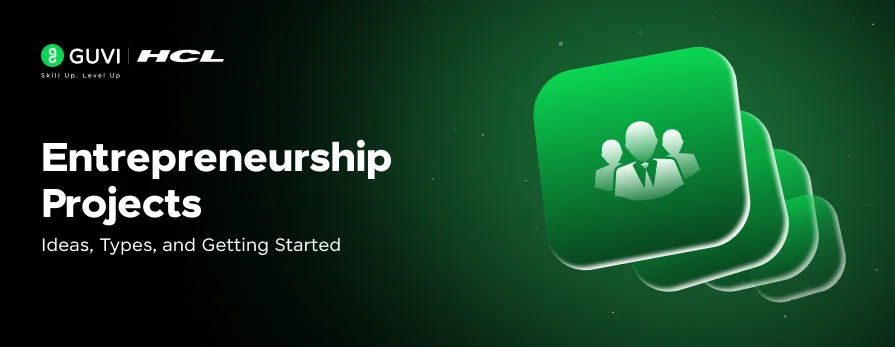

![Top 10 React Native Project Ideas [With Source Code] 14 React Native Project Ideas](https://www.guvi.in/blog/wp-content/uploads/2024/10/React_Project_Ideas.png)

![Top 9 AWS Projects for Beginners with Source Code [2025] 15 aws project](https://www.guvi.in/blog/wp-content/uploads/2025/07/aws-project.png)
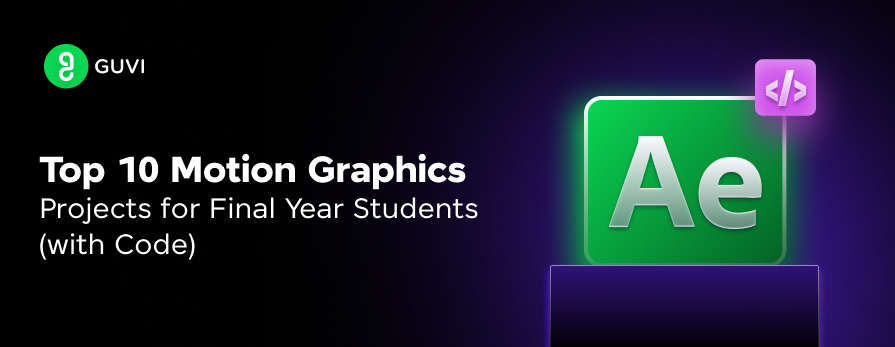
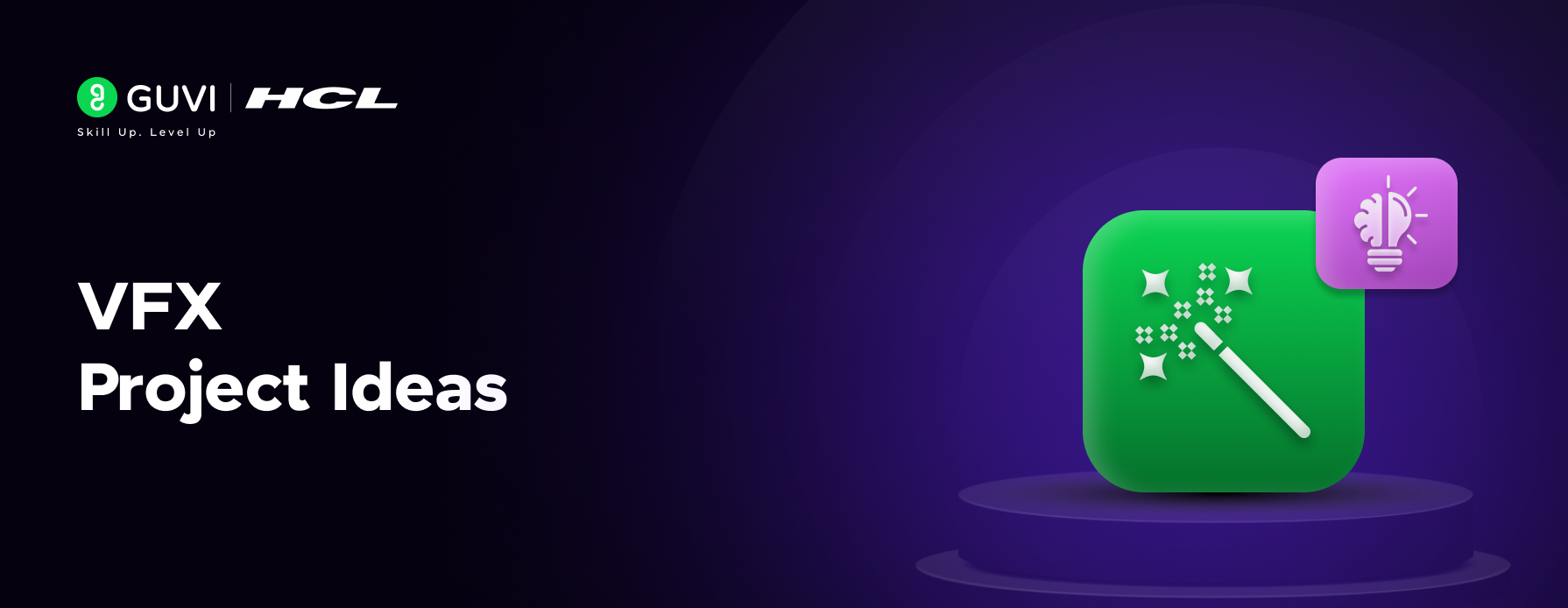
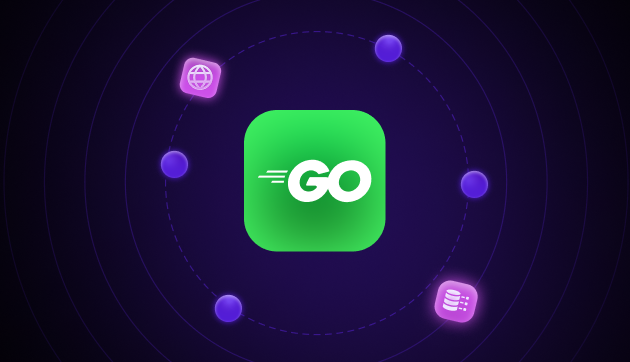
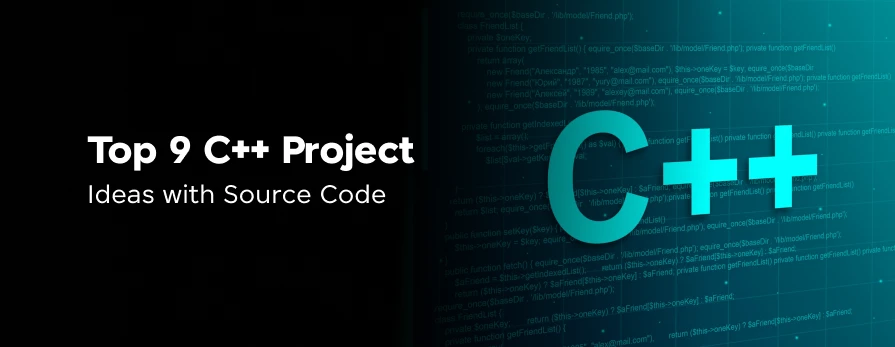

It is useful for my studies and my final year project